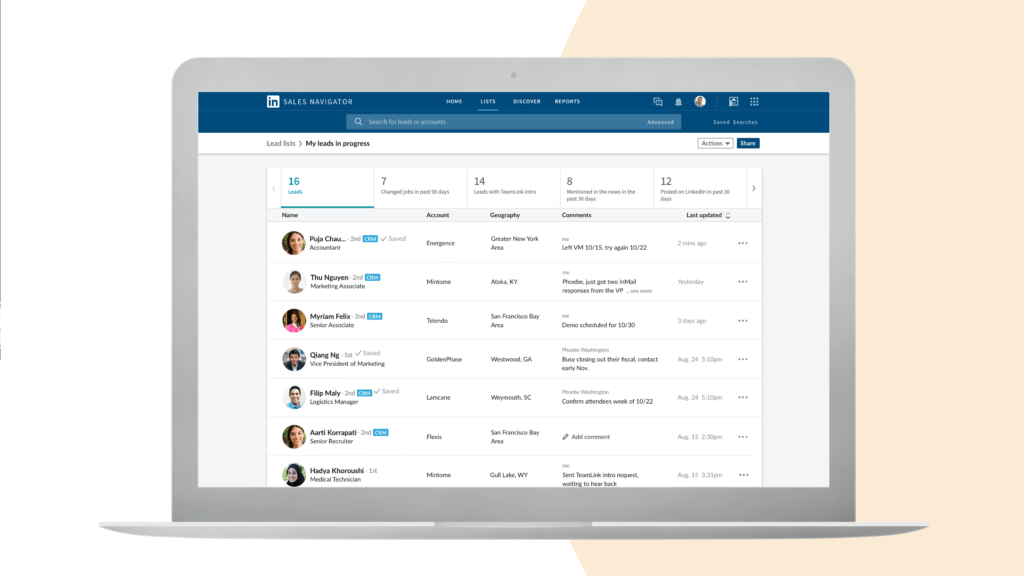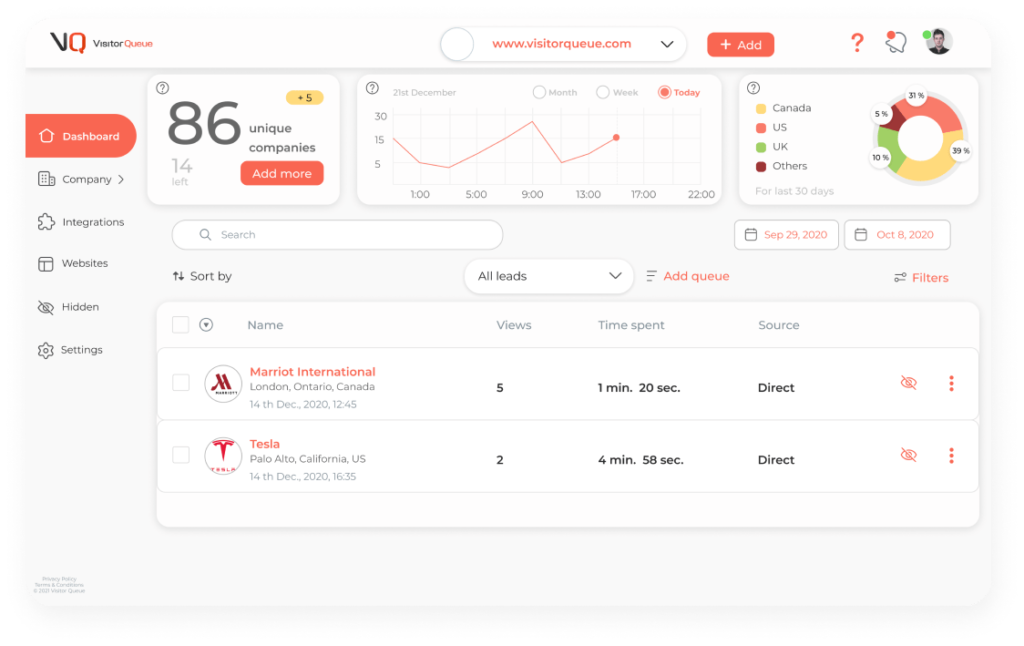Connecting with the right decision maker can be the difference between making a sale or not. But, with 40% of salespeople reporting that prospecting is the most challenging part of sales, it’s easy to see how your team can miss out on deals. And, that’s exactly why we have put together this article on how to find the right decision maker at B2B companies. Additionally, we are going to go through the best ways to reach out to these decision makers after you’ve found them. First, let’s go through the decision making hierarchy in B2B companies.
Decision Making Hierarchy in B2B Companies
Understanding the different roles within a company’s decision making process is essential. Typically, multiple people are involved, and each plays a different part in influencing a purchase decision. Here are the main roles that salespeople have to deal with.
End Users
End users are the individuals or teams who will actually use the product or service you are selling. While they may not have direct decision making power, their feedback and preferences can influence the final choice. Understanding their pain points and how your product can benefit them is key in making your pitch appealing.
Influencers
Influencers often help shape the decision by providing insights or recommendations to the decision maker. They may be senior managers, department heads, or technical experts who understand the operational details and potential benefits of a product. Engaging with influencers can help strengthen your case and give you access to the final decision maker.
Gatekeepers
Gatekeepers are typically assistants, coordinators, or administrative staff who control access to the decision maker. Although they may not be directly involved in decision making, they play a crucial role in determining whether you get to speak with the decision maker. Treat gatekeepers with respect and professionalism, as they can either facilitate or block your entry.
The Decision Maker
The decision maker is the person who has the authority to approve the purchase. They are usually in senior leadership positions, such as the CEO, CFO, or department heads. Identifying and connecting with the decision maker is essential to closing the deal. This individual will have the final say and is focused on how your solution will impact their business’s bottom line. Understanding these roles and how they play a part in your sales cycle is crucial, and will depend on your company. Once you have an understanding of how these roles play in your cycle, you can build strategies around finding the right decision maker.

Strategies for Finding the Right Decision Maker
Finding the right decision maker requires more than guesswork. Below are several strategies to help you pinpoint the key person within a company.
Research Organizational Structures
One of the most effective ways to find the decision maker is to research the company’s organizational structure. Many large companies have public-facing information on their websites, such as leadership pages or team directories, which can provide valuable insights into who holds decision making authority. Additionally, when companies onboard new executives, you’ll oftentimes see it on LinkedIn, whether it’s the company page or the new employee posting.
Leverage LinkedIn Sales Navigator
LinkedIn Sales Navigator is a great asset to any B2B sales team. By using advanced search filters, you can identify individuals based on job titles, industries, and company sizes. The tool also allows you to see who in your network is connected to potential decision makers, which can help you secure introductions and warm leads. Additionally, using LinkedIn rather than cold emailing can help form your relationship and awareness. Take a look at our Complete Guide to LinkedIn Marketing to learn more about leveraging this tool.

Attend Industry Events and Networking Opportunities
Industry events, trade shows, and networking opportunities are excellent places to meet decision makers face-to-face. These events are typically attended by high-level professionals, making it easier to connect with the right people. By engaging in meaningful conversations at these gatherings, you can gather direct contact information, make personal connections, and increase your chances of closing a deal.
Email Prospecting
Email prospecting remains an effective way to reach decision makers, but only if done correctly. Crafting personalized emails that highlight the specific business challenges of the prospect’s company and offering a clear solution can increase the likelihood of a response. Avoid generic emails and instead focus on tailoring your outreach to the specific decision maker and their role in the company. Do some research about your prospects on their website and LinkedIn page to learn more about their needs.
Identify Your Website Visitors
With the help of Visitor Queue, you can easily find the B2B decision makers that are already on your website. By installing a tracking script on your website, you can easily identify the companies on your website, including how they got to your website, the pages they viewed, and how long they spent on each page. Additionally, we provide employee contact information so you can reach out to the decision makers at each company who are already showing interest in what you have to offer. Start your 14-day free trial today and stop losing leads.

Use Your CRM
Your CRM is a great place to help identify and follow up with decision makers. Many CRM platforms allow you to track leads, contact roles, and previous conversations, making it easier to map out who the decision makers are based on past interactions. Additionally, if someone in your company has already had contact with a key person, you can leverage those connections to introduce yourself. This can also be a great way to cross sell other services that you know they may benefit from, but they don’t have in their current package.
Leverage Your Existing Network
Your existing network is one of your most valuable resources for finding decision makers. Don’t hesitate to ask for introductions through mutual contacts or previous clients. LinkedIn, industry associations, and even your company’s customer base can provide connections to decision makers at new companies. A warm introduction is often more effective than cold outreach, and using your network can help you bypass gatekeepers and connect directly with decision makers.

You’ve Identified a Decision Maker, Now What?
Once you’ve identified the decision maker, your next steps are crucial to securing a meeting and moving the deal forward. Here are a few key steps that you’ll want to consider when you reach out.
Personalize Your Approach
Your outreach to the decision maker must be personalized and specific to their company’s needs. Demonstrating that you’ve taken the time to understand their business and challenges sets you apart from other salespeople. Make your value proposition clear by framing your product or service as a solution to their unique pain points.
Offer Value Before Asking for Time
Provide the decision maker with something of value before asking for a meeting or demo. This could be an industry report, relevant data, or insights that would benefit their business. When you offer value upfront, it shows you are more interested in helping them solve a problem than just making a sale.
Strategic Follow Up
It’s rare to secure a meeting on the first attempt, so consistent follow-up is necessary. However, be strategic in your follow-up by adding value with each interaction. Avoid overwhelming the decision maker with too many emails or calls; instead, offer new information or address any concerns they may have raised. It can be helpful to set up email drip campaigns that can trigger emails after certain events, like website visits, eBook downloads, or button clicks.
Use Social Proof
Decision makers are more likely to engage with you if they trust your company. Build credibility by sharing case studies, testimonials, and examples of how your product or service has helped similar businesses. Tailoring social proof to the decision maker’s industry can strengthen your case even further. You can showcase these assets on your website, social media pages, paid advertising, and email campaigns. To learn more about social proof, take a look at this article What is Social Proof Marketing.
Build a Long Term Relationship
Your goal shouldn’t just be to close the sale. But, to build a long-term relationship with the decision maker and their company. Even if they don’t buy from you now, they may in the future or refer you to others. By consistently adding value and demonstrating your commitment to helping their business succeed, you can create an opportunity for future opportunities.
Next Steps
Finding the right decision maker in B2B sales is both a challenge and an opportunity. By leveraging the strategies outlined above and building meaningful relationships with key contacts, B2B salespeople can improve their chances of closing deals and driving long-term success. As always, if you have any questions about how to use Visitor Queue to identify the decision makers on your website, do not hesitate to contact us.
 Identify
Identify Personalize
Personalize Benchmark
Benchmark Agencies
Agencies Integrations
Integrations Case Studies
Case Studies Use Cases
Use Cases Blog
Blog Resources
Resources









